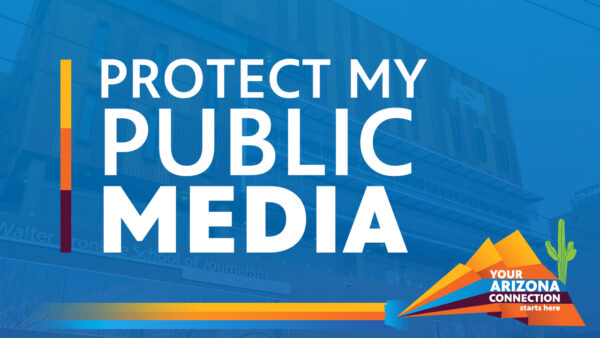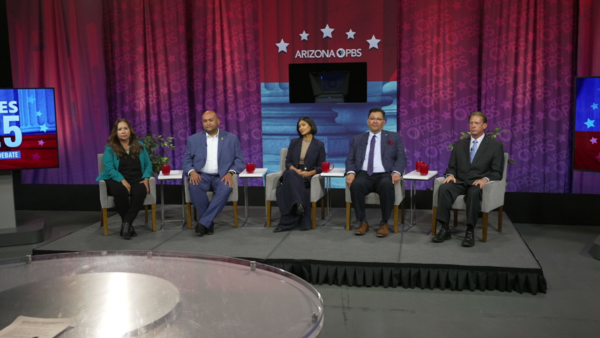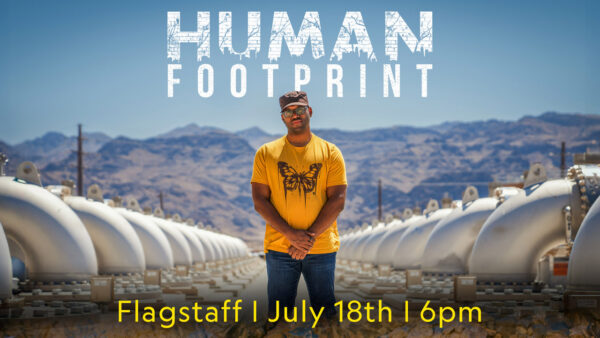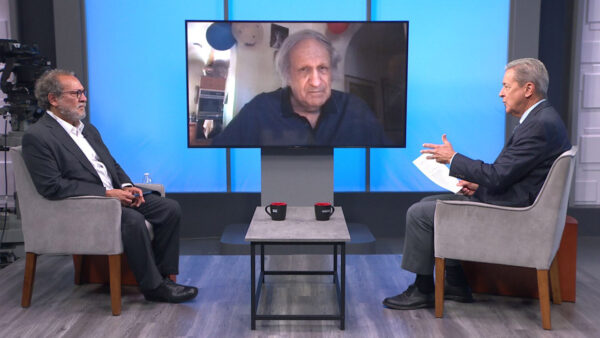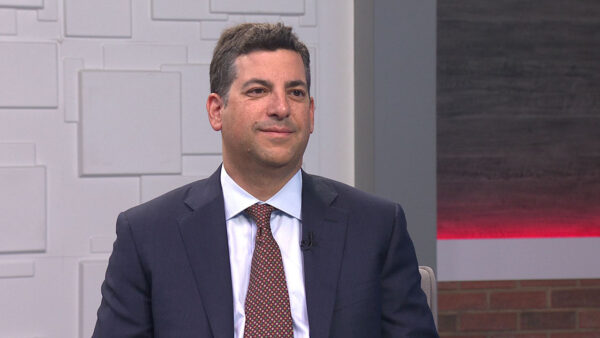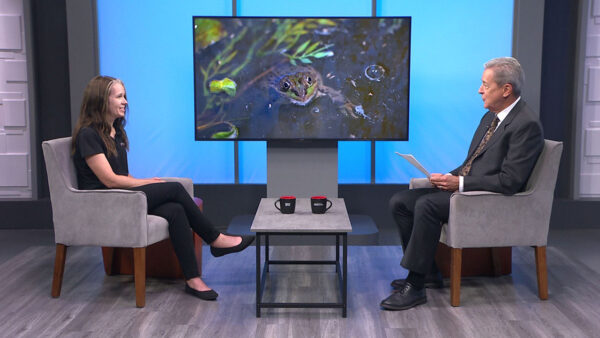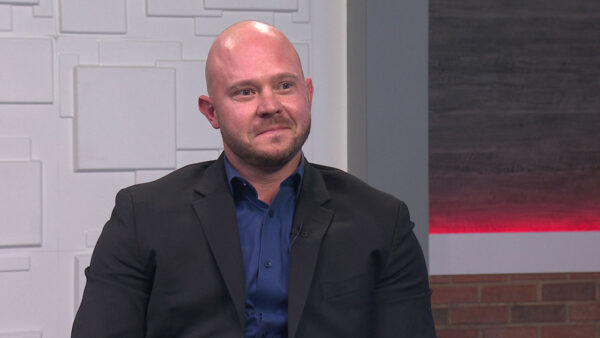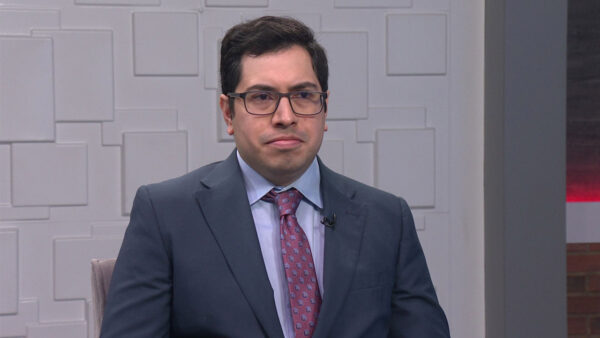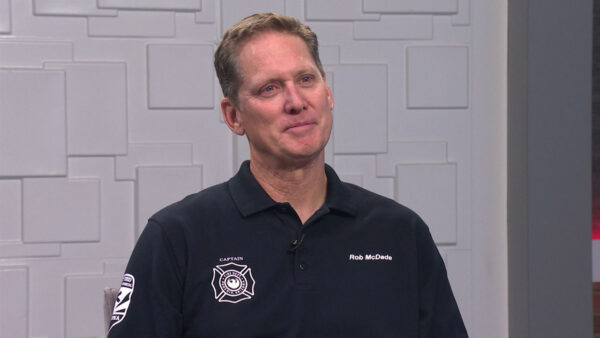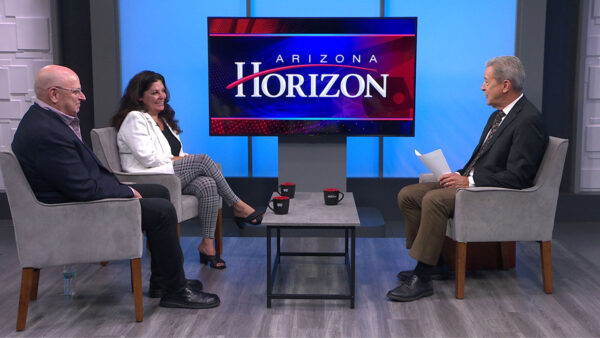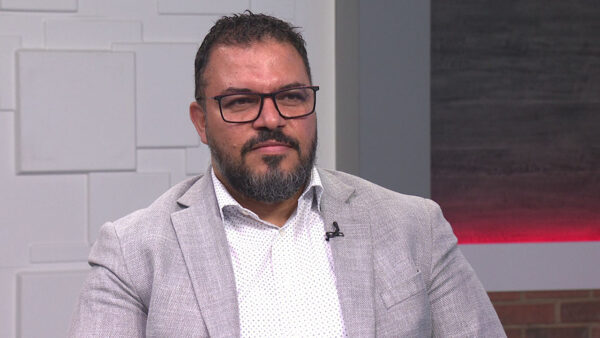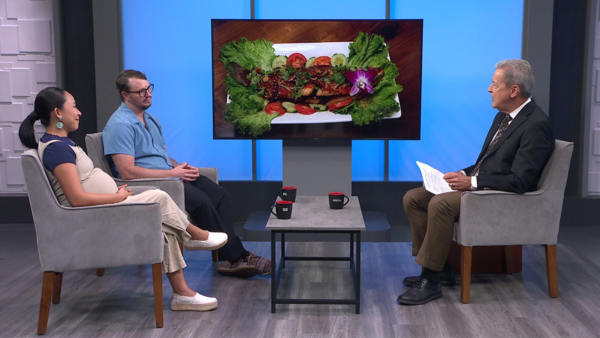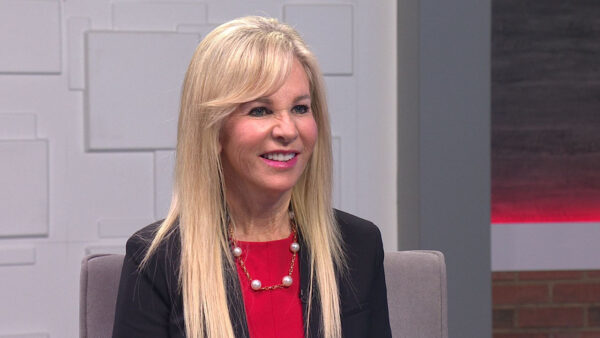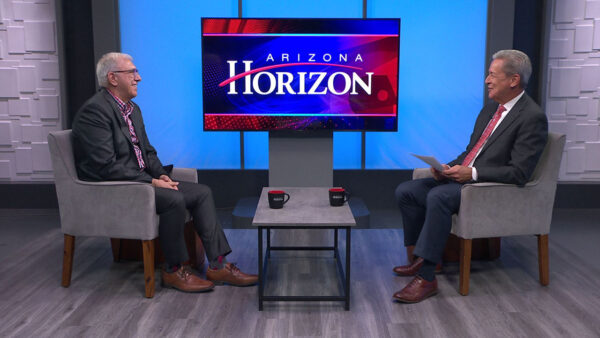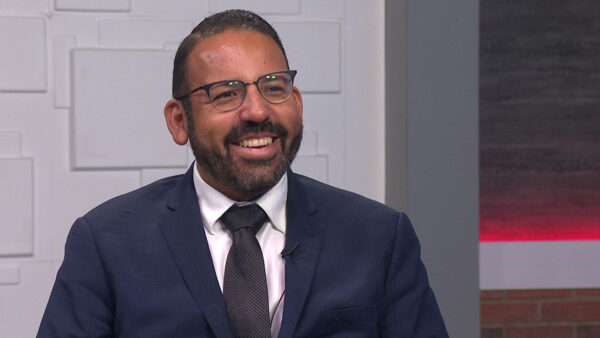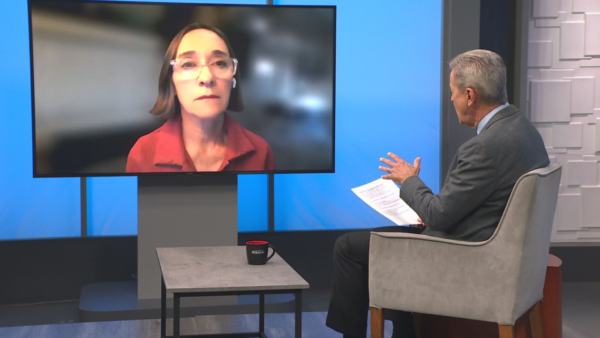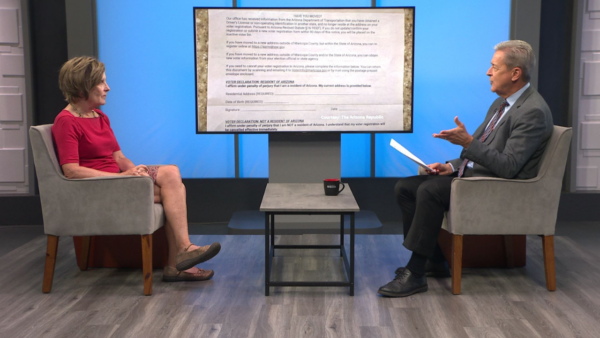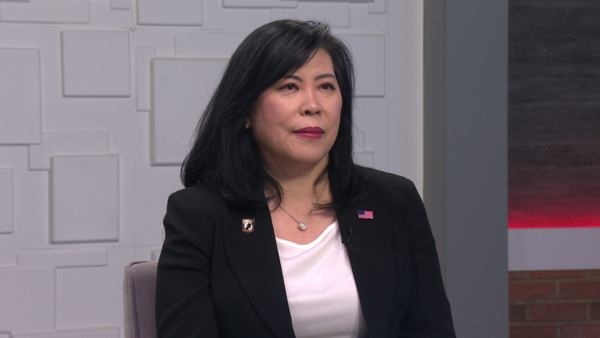Saturday just after midnight, history was made at Sky Harbor Airport. That’s when the solar-powered plane “Solar Impulse” landed on the first stop of its trip across the country. The plane can fly at 40-miles-per-hour day or night. Pilots Bertrand Piccard and André Borschberg talk about the revolutionary aircraft.
Ted Simons: Good evening, and welcome to "Arizona Horizon." I'm Ted Simons. Sky Harbor made history this past Saturday when just after midnight a solar-powered plane landed on the first stop of a trip across the country. Here to talk about the solar powered aircraft are its pilots, Bertrand Piccard and André Borschberg. Good to have you both here. Thanks for joining us.
André Borschberg/Bertrand Piccard: It's a pleasure.
Ted Simons: OK. The solar-powered impulse. What are we talking about here?
Bertrand Piccard: We're talking of an airplane which has the wingspan of a jumbo jet 747 and the weight after small car. And this allows this plane to be so energy efficient that it can fly day and night on solar power with absolutely no fuel.
Ted Simons: And so obviously solar-powered, how was the solar integrated into the plane?
André Borschberg: We have solar cells which are -- Make the surface of the wing and the horizontal stabilizer. They provide the lift and the energy. What's interesting, you can fly during the day, you can climb to 30,000 feet, you can still at the same time fill up the batteries up, so the more you fly more energy you get in the airplane.
Ted Simons: Day and night, that means you can store enough to where when nighttime comes you're still in the air.
Bertrand Piccard: Exactly. This is really important for people to understand that, now with these technologies and renewable sources of energy, we can achieve things that are absolutely incredible. Things that people didn't think possible, in the air. So of course on the ground we can use them also.
Ted Simons: Sure. Sure. OK. You mentioned the weight of an average car. How fast does it go?
Bertrand Piccard: We cannot go as fast as the F51 last week --
Ted Simons: Sure, sure.
Bertrand Piccard: We're flying about 45 to 50 miles per hour.
Ted Simons: And when you're going the 45 to 50 miles an hour, I'm guessing it's a solar plane, doesn't make much noise, does it?
André Borschberg: You don't have to go down to refuel, so you can continue however long you want. It doesn't make any noise, that's true. Sometimes you can hear the airplanes before you can see them.
Ted Simons: Can it go through clouds?
André Borschberg: No, this is the first airplane we build, it's fully experimental, it's designed to demonstrate we can fly day and night. It flies so well we accepted the invitation to do the first international flights in Brussels and now the first coast-to-coast flight in the country.
Ted Simons: We're seeing you take off from Mountain View, California. This is the trip that took you to Phoenix. This has to be a hoot, really has to be something up there to flying this plane.
Bertrand Piccard: Especially when you have people taking pictures from the helicopters. Well, you have to really imagine that it's very strange for pilot to fly an airplane like this, because it has a lot of inertia, it's sensitive to turbulence, but at the same time it's a unique airplane, there are no other airplanes like this in the world. So when you're sitting in it it's a privilege. You feel you represent not only the team who has built it, but you represent also the thousands of people who have signed up on our home page in order to have their name carried in the cockpit with us across America. And they're all people who speak out for renewable energies, clean technologies, so it's our responsibility to carry their names across the country.
Ted Simons: You mentioned turbulence and I ask you about turbulence as well, how much tush dense can it take right now?
André Borschberg: For pilots we cannot moderate turbulence but we try to avoid it. We take off early in the morning, land between 12 and 1 o' clock in the morning, because of the wind. But also because of the traffic. We need a full runway for operations, and due to that, the airports accept us late at night.
Ted Simons: Here we're seeing you landing at Sky Harbor. I can't believe that the city didn't turn itself upside down with thoughts a UFO landing. But that is so impressive, and again, when you're talking solar, and you're talking you're up there long enough, you can stay up there as long as you darn well please, huh?
Bertrand Piccard: Yes. The plane could fly nonstop from San Francisco to New York. But the pilot is less sustainable than the airplane so we have to land, change the pilot, that's why he does some legs I do others, and it gives the opportunity for people to see the plane. If we were flying nonstop nobody would see it.
Ted Simons: The first stop after transcontinental flight, Mountain View to Phoenix, where do you go next?
Bertrand Piccard: Dallas Fort Worth.
Ted Simons: When are you leaving?
Bertrand Piccard: As soon as the weather in Texas is good. Here it's not a problem. We have to take care of the weather on route.
Ted Simons: Regarding be the experimental nature of the plane and where it goes from here, obviously weather is a factor right now for this kind of plane. How long before weather doesn't become that much of a factor?
André Borschberg: We realize we are like 1915 when people were trying to cross the United States, cross the ocean. We hope to be able to do it in two years with the second airplane under construction, and in two years we'll attempt to fly around the world. So we are very early. It took 25 years between the Wright brothers' first flight until Charles Lindbergh could cross the Atlantic, another 25 years to have passengers across the same ocean.
Ted Simons: With that in mind, why are you doing this? Why is this important?
Bertrand Piccard: Because we believe that for the challenges of our world today, we need pioneering spirits. We need innovation. We need creative ways of thinking. Out of the box, maybe even out of the grid. And we want to inspire people in schools, in Universities, political worlds, also for the public, and demonstrate that all the technology, clean technologies exist already now to make a big difference in everyday life. And this creates jobs, it makes profit, and at the same time it protects the environment. So it's a big win-win. And if we show it in a spectacular way with the solar airplane, people are passionate, and they listen and they follow the message.
Ted Simons: Same question to you as well, when someone says this is all great, but why? How do you respond?
André Borschberg: Interestingly, the partners with whom we work, about companies, do not come aviation. They come from different fields, chemical industry, semi conductors, these companies are interested in products which help us to reduce our energy consumption. Keep the same quality of life, but using less energy. What you have on this aircraft can be used on the ground. You can have solar cells on your home, the batteries in your car,the insulation in your refrigerators, that's the motivation of these partnerships.
Bertrand Piccard: You see the 16 landing lights on the plane, all together it's used as 150 Watts. It's like light bulbs of a bedroom. And if we were using these technologies everywhere in the world, we could already divide by two our energy consumption today, and produce half of the needs with renewable sources. And this is a demonstration of this.
Ted Simons: Is that message getting across? Are people listening and taking -- Is there still a lot of naysayers, critics questioning what you're doing?
Bertrand Piccard: Some people are a little bit old fashioned in their way of thinking, but not in Arizona. In Arizona we have a wonderful meeting with madam governor, with Ken Bennett --
Ted Simons: secretary of state, yes.
Bertrand Piccard: And they all expressed their interest in energy efficiency, solar energy, so here we feel at home, I tell you.
André Borschberg: For the people who believe that this is important, that this industry has real potential, they should sign up on our website and show that we are not the only one.
Ted Simons: All right. Very good. Good information, gentlemen. Safe travels. Good to have you here. Thanks for joining us.
Bertrand Piccard:Pilot; André Borschberg:Pilot

